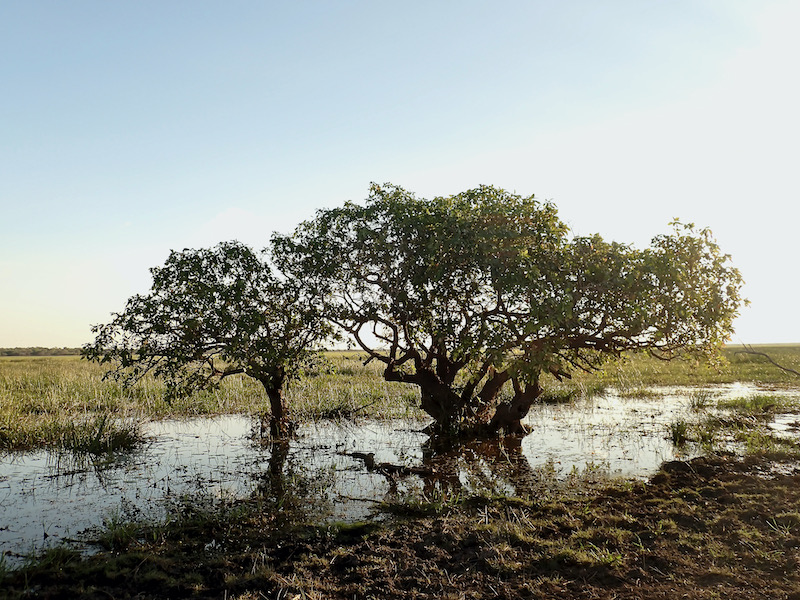When I think back to June, this month’s travel in a 20 month journey around Australia provided the most concentrated diversity of natural and cultivated landscapes and culture experiences.
Following the Savannah Way tourism route across the top end, I experienced the intense, humid and richly abundant life of the Daintree and Atherton Tablelands to the windswept flat and barron Barkly Tablelands, culturally ancient Kakadu and waterfall-featured Litchfield National Parks.
Below is a snapshot of some of these experiences and impressions along the way. Even though it’s now some time ago since these roads were traveled, I hope you’ll enjoy another ride together on this epic journey around Australia.
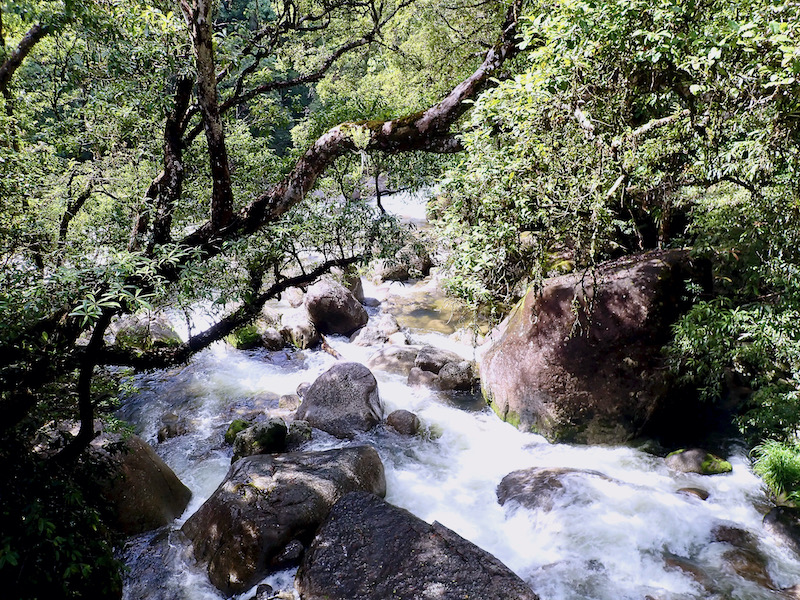
MOSSMAN GORGE, FAR NORTH QUEENSLAND: After reluctantly leaving Cairns with Safari-blues and a nasty cold swirling in my head, I ventured on to Mossman Gorge. Here I learnt that the tropical rainforests of Daintree National Park are part of the largest, continuous area of rainforest in Australia. They support a large diversity of plants, many of which grow nowhere else and some of which are threatened. Much of the Mossman Gorge section of the Daintree National Park consists of the rugged, largely inaccessible slopes of the Main Coast Range, and Windsor and Carbine tablelands. It is these steep mountain ranges that trap moisture blown in from the ocean and ensure frequent rainfall, maintaining the rainforest; ultimately feeding the Mossman and Daintree rivers.


Tall, dense rain forests cover the lowlands and stunted, windswept montaine rainforests occupy the mountaintops. After being bused in from the Mossman Gorge Centre, I took the incredibly lush 2.4 km Rainforest Circuit Track Walk. It felt like an ancient wonderland where fairies and gnomes were hidden from view while watching your every step.

COOKTOWN, FAR NORTH QUEENSLAND: Traveling a further 260km north from Mossman Gorge I arrived in Cooktown. The view above is from Cook’s Lookout. In 1770 James Cook and Joseph Banks stood on this spot and surveyed the dreadful predicament that they and their companions faced as castaways on this very remote bit of coastline. They ended up spending seven weeks on the site of present-day Cooktown, repairing their ship, replenishing food and water supplies, and caring for their sick.

The following day I rode back south towards Atherton, passing fresh produce stalls and banana plantations along the way. The one above being well care for and interestingly stocked including super hot homemade chilli sauce, sugar bananas (Lady Fingers), local honey and a variety of other tropical fruit.
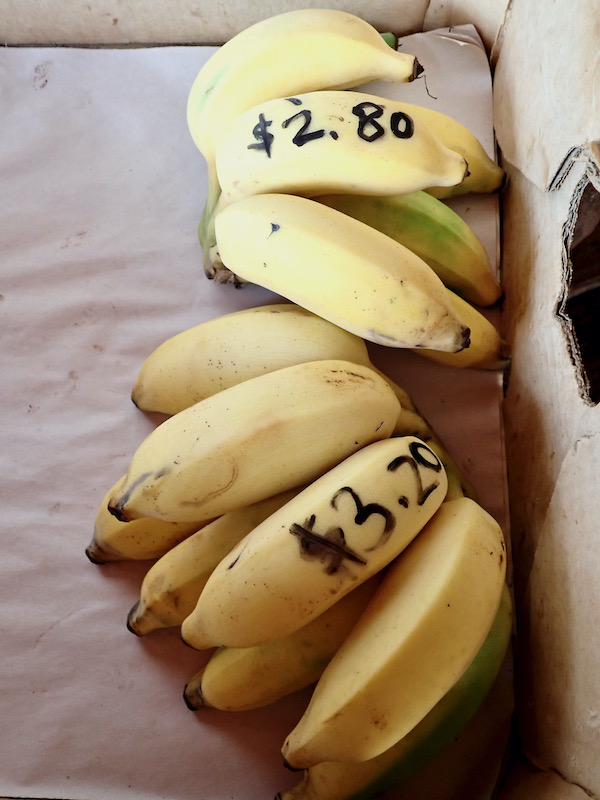


Over the course of the BMW Safari tour and subsequent days, the most prominent feature in the landscape apart from sugar cane fields and mango orchards were banana plantations. Chinese migrants are thought to have brought the first banana plants with them to Australia in the 1800s – firstly in the early to mid 1800s to Carnarvon in Western Australia and then to north Queensland in the 1870s. Tully is the major banana-growing region along with Innisfail, Silkwood and Mourilyan, the Atherton Tablelands and Lakeland Downs, which is where the above photo was taken.
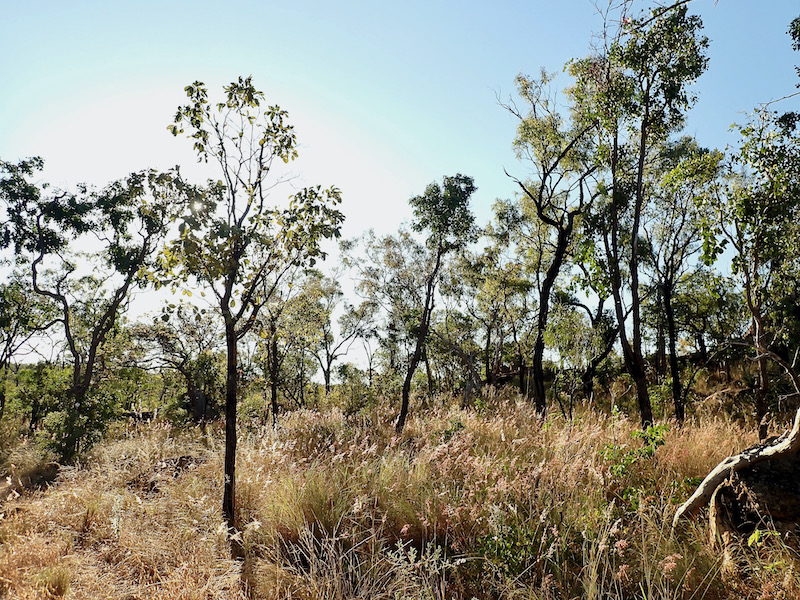
THE SAVANNAH WAY: Continuing west I traveled along the famous Savannah Way. A route which traverses three Australian states and territories, twenty national parks and five World Heritage Sites. From one side of the continent to the other, it explores 3,699kms of Australian outback with famous fishing hubs, bird-watching hotspots, fossicking sites and cattle stations that welcome visitors on their journey through the “gulp country” – a reference to how quickly (and frequently) cold beverages are consumed in the hottest part of the country.
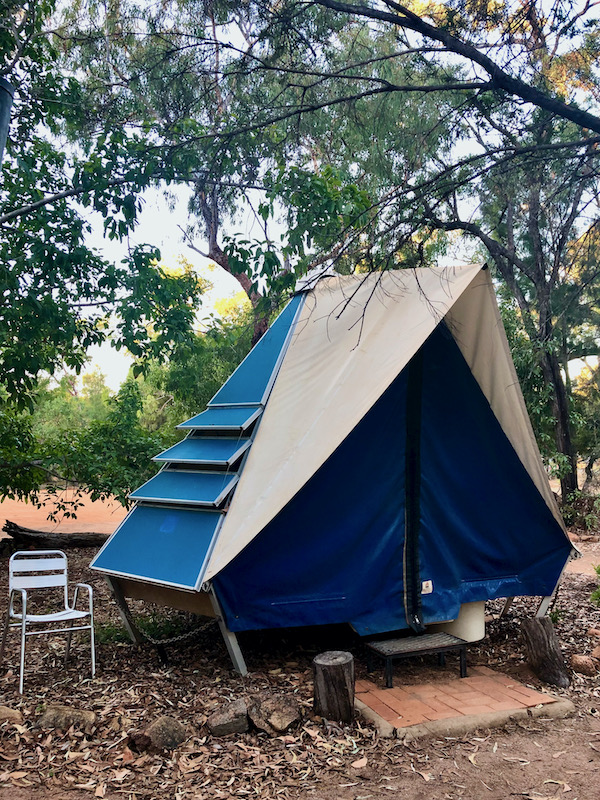
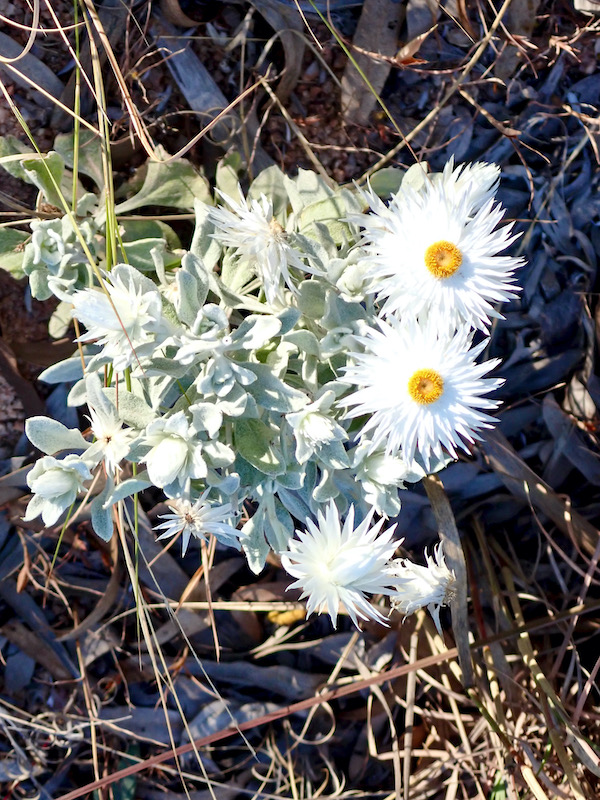
UNDARA LAVA TUBES: Just east of Mount Surprise on the Savannah Way there is a field of 164 volcanoes within the Undara Volcanic National Park. The Collins family were the earliest white settlers in this locality whose cattle have grazed in the area since 1862. They applied to develop a tourist facility to showcase the lava tubes located on the family holding, Rosella Plains Station, in 1987, which eventuated as the Undara Experience. This now includes Pioneer Huts, restored historic train carriages, campsites or teepee style tents in the Swag Tent Village, which is where I took a night off from pitching my own and stayed.

Along with the accommodation the Undara Lava Tubes can be explored with experienced Savannah Guides on a variety of different tours which walk you through the spectacular tube formations and the native wildlife and stories of life on the Rosella Plains Station.

There were also a variety of different walks from the Undara Experience site into the national park, some with elevated views over the beautiful Savannah country.

KARUMBA POINT, QUEENSLAND: After the Undara Lava Tubes I continued west and then from Normanton north to Karumba Point on the Gulf of Carpentaria. In the 1870s a telegraph station was built on the site of the present town of Karumba –

THE SAND ISLAND SUNSET CRUISE, KARUMBA POINT: I came to Karumba Point as I’d heard about the Sand Island Sunset Cruise from a new travel friend I’d met in Townsville. Freshly cooked local prawns and a glass of white wine while watching the sunset from a sand island just off shore.


The tour began by traveling down the river past Karumba with a guide providing narration of the history of the town, prawning and fishing industries before heading out into the Gulf and landing on the sand island. Here the tour company set up a table with a variety of snacks including a large platter of freshly cooked local tiger prawns, which we ate with a glass of wine while watching a beautiful sunset.

Pelicans and a variety of other birds perched on the end of the sand island spit to enjoy the fading light and molten colour in the new evening sky.

BARKLY TABLELANDS, NORTHERN TERRITORY: Back on the Savannah Way the incredibly strong winds over the baron Barkly Tablelands, which covers 21% of the total area of the Northern Territory, made the riding quite a challenge at times. The above photo was taken while traveling the 380km north stretch from the Barkly Homestead Roadhouse to Cape Crawford. With no services in between and sections of very little vegetation, the curvature of the earth was clearly visible.

MATARANKA HOMESTEAD, NORTHERN TERRITORY: Inching ever closer on the map to Darwin, I took a few days break in Mataranka; 420 km south of Darwin. Here there are hot springs; the Mataranka Thermal Pools and Bitter Springs, which are both located in the Elsey National Park. It is croc-safe to swim here and the springs are a perfect 34 degrees Celsius year round. The rest of the National Park waterways are crocodile habitat, so definitely no swimming.


Huge reservoirs of water 30 – 100 metres underground heat to around 34c. The springs are Elsey National Park are not true hot springs as there’s no hotspot heating the water just the normal temperature increase with the depth. Here at Mataranka’s Rainbow Spring 30.5 million litres of spring water flows through the pool everyday out into the Waterhouse River and on into the Roper River.
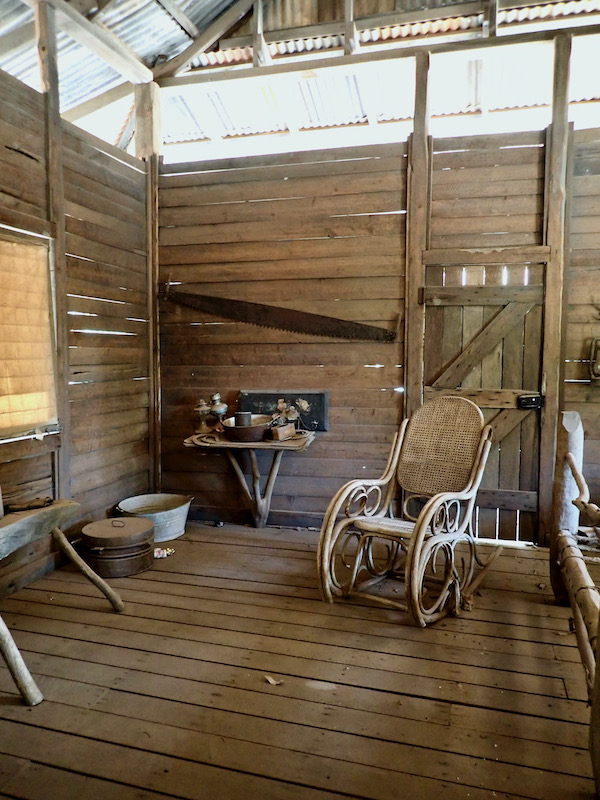

WE OF THE NEVER NEVER: The Mataranka area was the setting for Jeannie Gunn’s autobiographical account of the year 1902, We of the Never Never. The homestead, which she shared with her husband, Aeneas Gunn, until his death, has been reconstructed near to the hot springs. Although published as a novel, We of the Never Never is an account of the author’s experiences in 1902 at Elsey Station near Mataranka in which she changed the names of people to obscure their identities. She published the book under the name Mrs Aeneas Gunn, using her husband’s first and last name. Over the years, newspapers and magazine articles chronicled the fortunes of the Elsey characters.
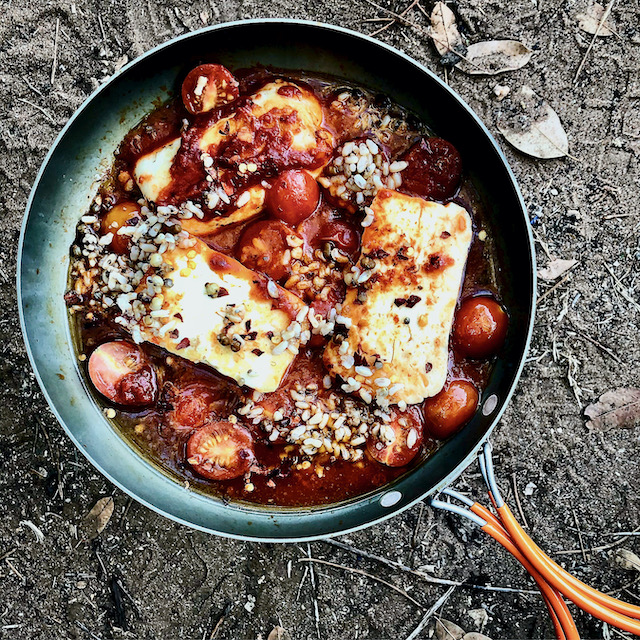
ONE-PAN SPICED TOMATO, HALOUMI & ANCIENT GRAINS: With no refrigeration, minimal space for carrying much of anything, moto-camp cooking is challenging. This dish however punched well above the sum of its few parts with flavour and is now a firm favourite. Haloumi chunks browned in olive oil, a few cherry tomato halves, a sachet of ‘pizza sauce’, chilli flakes, a cap full of red wine vinegar and a spoonful from a sachet of precooked 7 ancient grains.
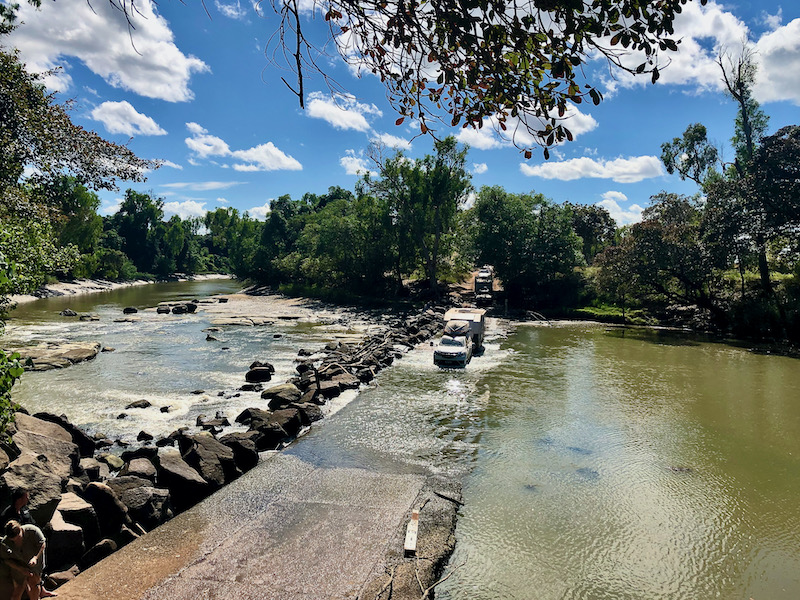
CAHILLS CROSSING, NORTHERN TERRITORY: After a few days in Darwin to restock and have an issue sorted with my fuel cap I traveled to Kakadu National Park. One of the many now famous points of interest is Cahills Crossing. Cahills Crossing is an infamous feeding ground for saltwater crocodiles and one of the most dangerous bodies of water in the country. It’s located on the East Alligator River and named after the legendary buffalo hunter Paddy Cahill (1863–1923) who was one of the first European pioneers of the region. Today, the crossing offers the only road access point between Arnhem Land and Kakadu National Park. It’s a notorious river crossing due to high water flow and abundance of saltwater crocodiles.
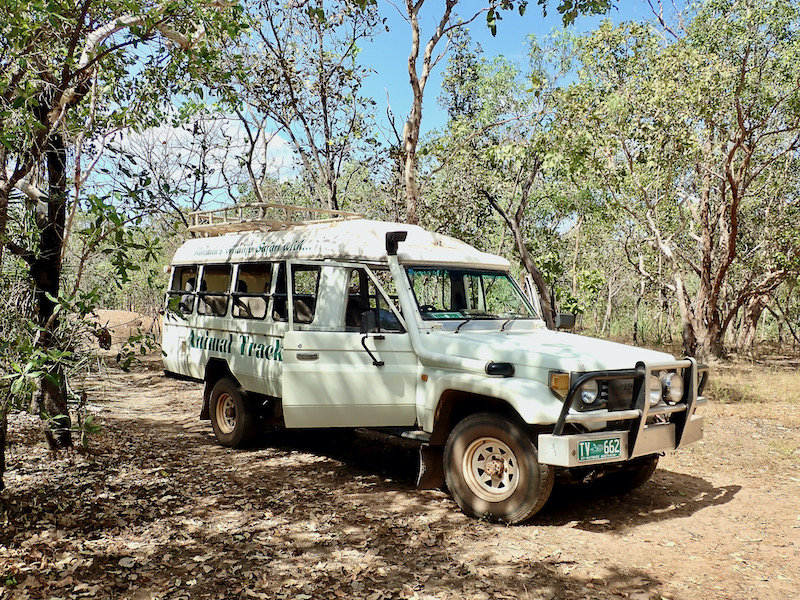
ANIMAL TRACKS TOUR, KAKADU, NORTHERN TERRITORY: The Animal Tracks Tour in Kakadu was another tour recommended by a friend, which was one of the most enjoyable nature and culture based tours I’ve experienced. We were a small group of 11 people who spent time with a guide and Patsy; an aboriginal elder who grow up in Kakadu and for whom being able to share a small part of her traditional life here is important. She is a living treasure and it was a privilege to be with her for a few hours collecting native ingredients and materials for our dinner in the evening.
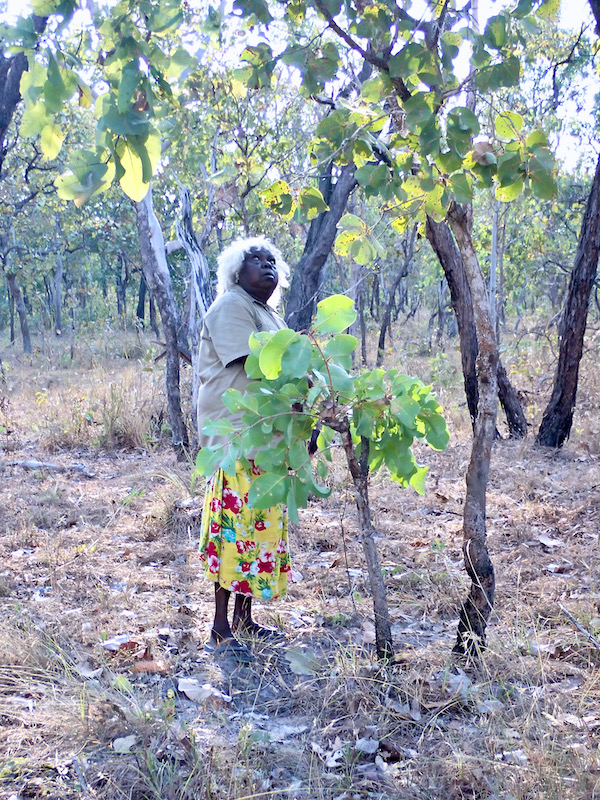
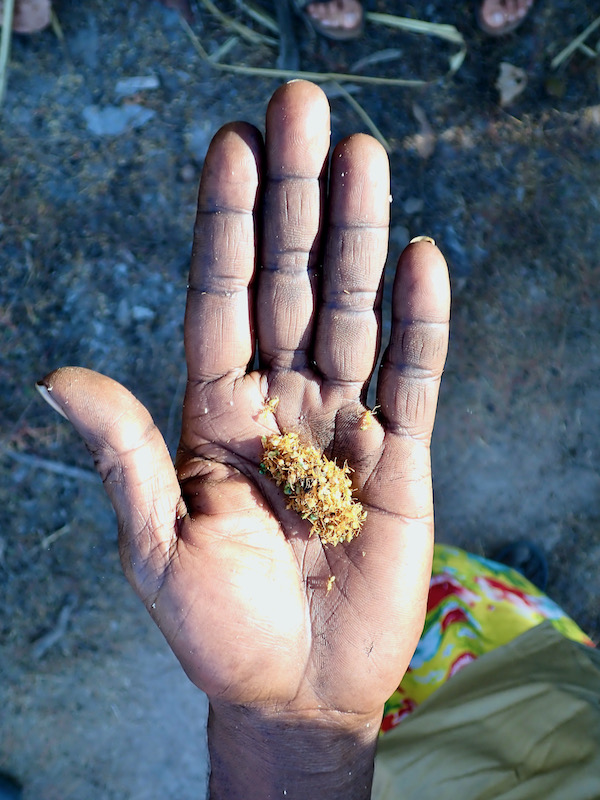
Patsy reached into a green ant nest and crushed a handful for us to taste. Green ants are a tasty source of protein and traditionally used as a remedy for colds. They tasted of lime with a hint of coriander seed and a popping-candy-like texture.


One of the first stops was to dig for fresh water mussels in the banks of a dry water way, which were later cooked in a billy on the fire.
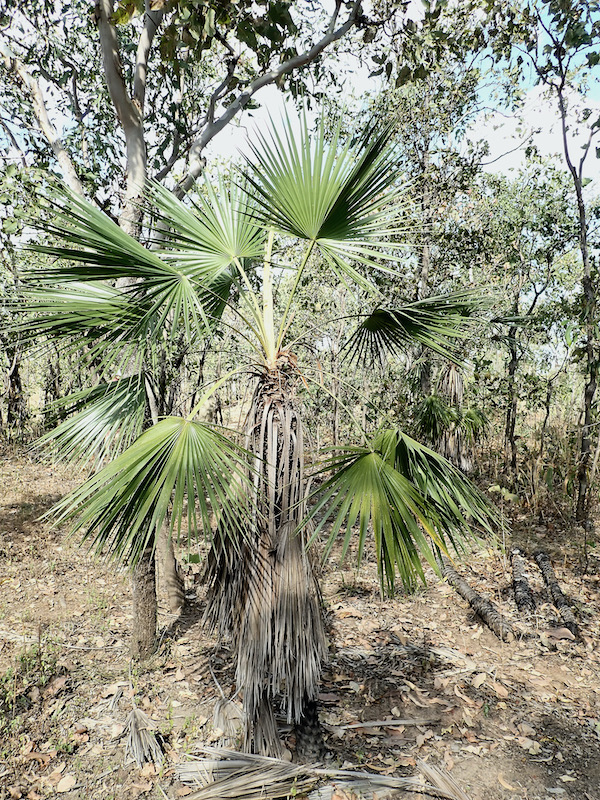
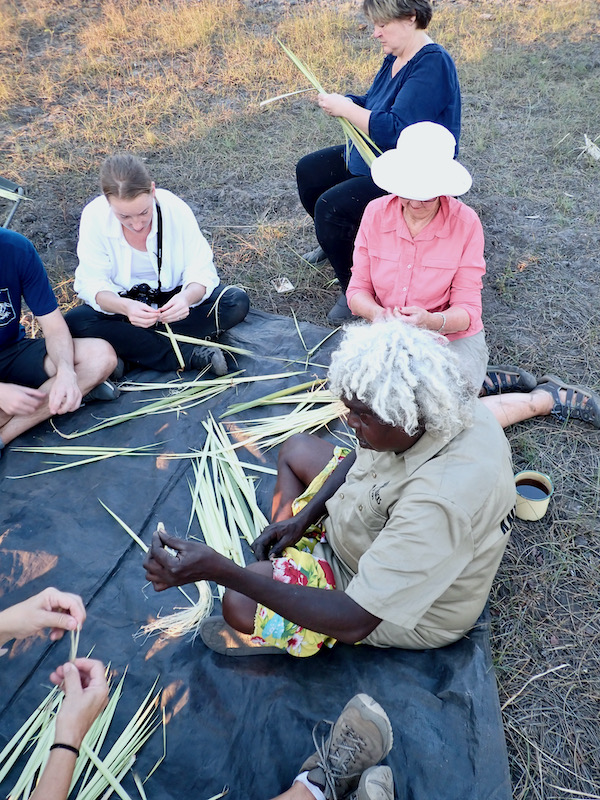
Patsy also showed us how to make string from Pandanus fibre; with her nimble, skilled hands making it look so much simpler than it really is.

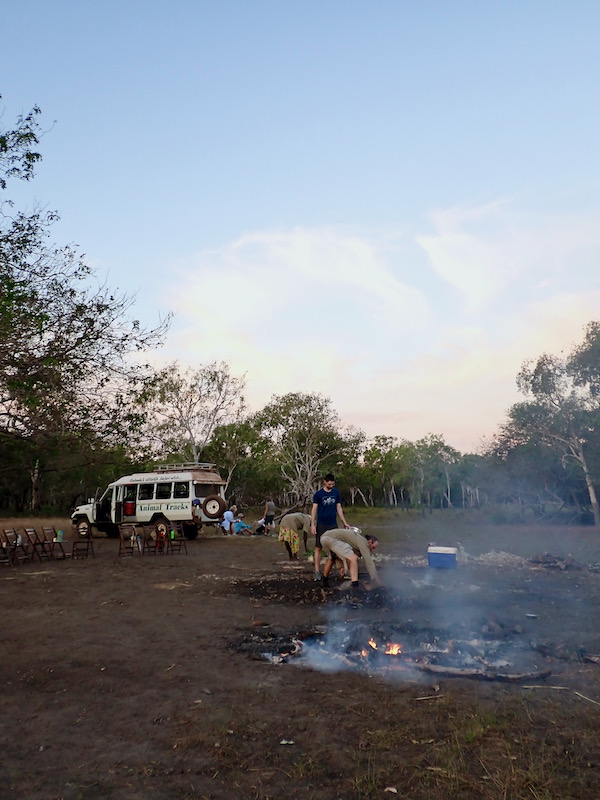
Our guide Doug prepared a simple damper dough which was also cooked directly on the coals in flattened oval shaped loaves.


Patsy also showed us how to cook barramundi, chunks of fresh buffalo meat and sweet potato wrapped in paperbark and eucalyptus leaves, which were buried and cooked in the camp fire coals.


A very simple but incredibly delicious, camp-fire cooked taste of Kakadu, that spoke of time and place, culture and generosity of spirit.
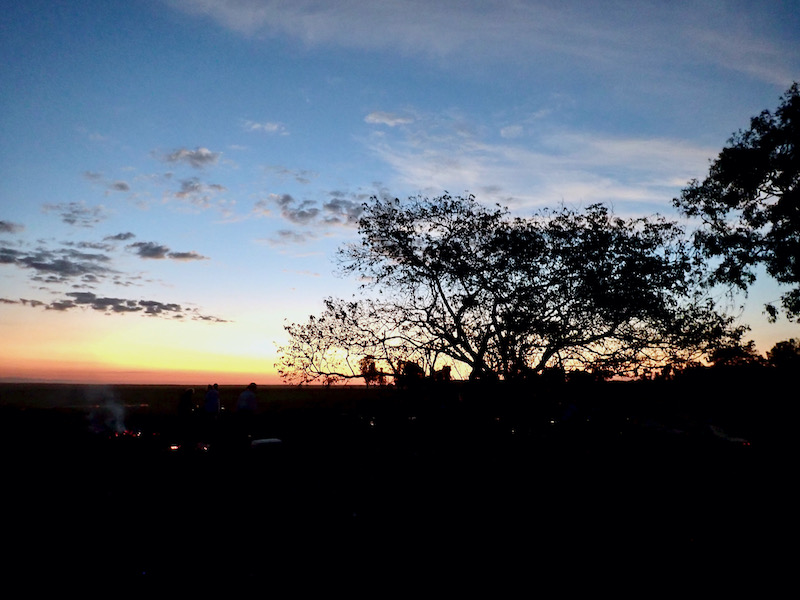
It was a magical sunset over the densely Magpie Geese populated wet lands and beautiful evening after a memorable day.
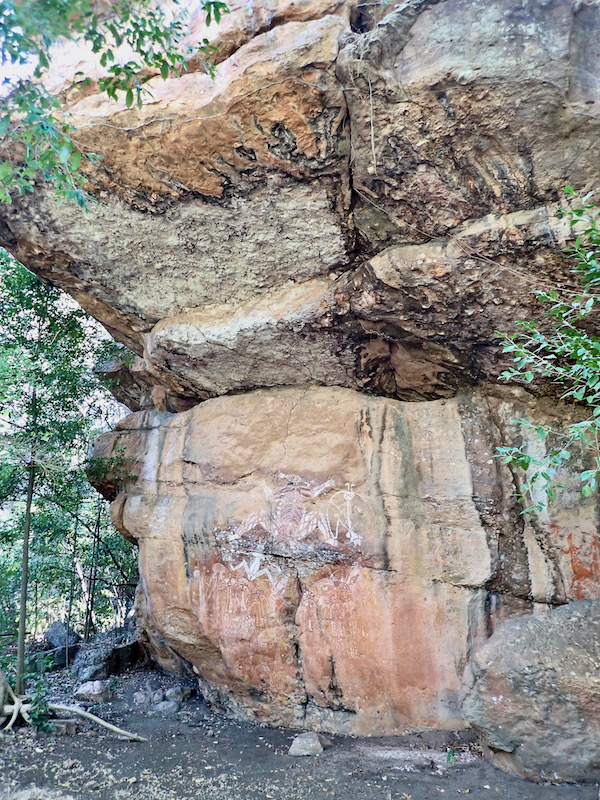

ANBANGBANG GALLERY, NOURLANGIE: Throughout Kakadu there are several opportunities to come into close proximity with aboriginal rock paintings. Rockart was painted to illustrate an aspect of a story. This may have been a creation story, a hunting experience or some other aspect of life. Some rock art stories here have been made inaccessible due to the preservation of cultural sensitivities or perhaps restoration work. The ones made available to the public have interpretative signage that helps with understanding the often complex stories and cultural law.
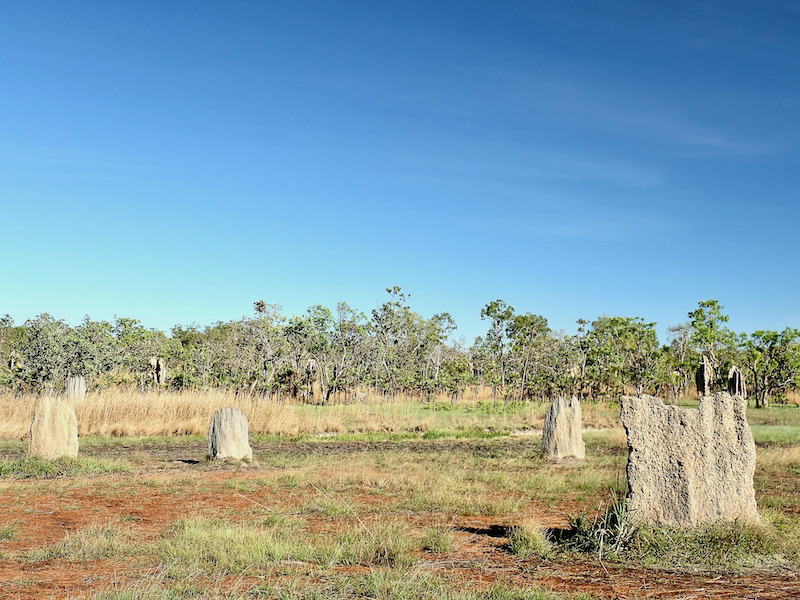
MAGNETIC TERMITES, LITCHFIELD NATIONAL PARK, NORTHERN TERRITORY: It’s a frequent sight in the landscape or a common comparison made that there are as many termite mounds in the Northern Territory as there are stars in the skies. The ones photographed above in the Litchfield National Park, where I traveled after Kakadu, differ as these wedge-shaped towers are aligned in a north – south orientation, which means one side will always be in shade. This cleverly ensures the termites always have a place in the mound that is just the right temperature given the extreme climate.

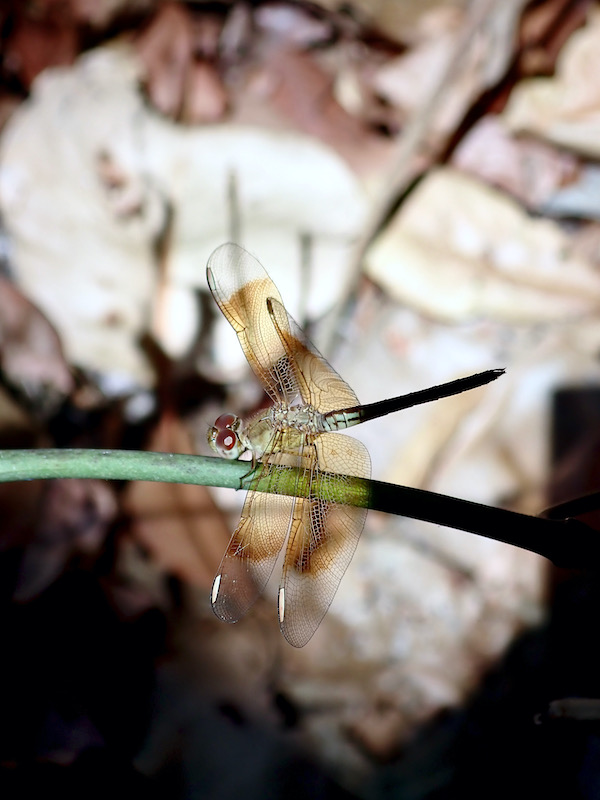

WANGI FALLS, LITCHFIELD NATIONAL PARK, NORTHERN TERRITORY: Wangi Falls is the best-known and most popular attraction in Litchfield National Park. The falls are found near the western boundary of the park, 150 kilometres south of Darwin along sealed roads. There is a lovely picnic area directly in front where you can watch the water from the two falls cascade over the rock escarpments into the large plunge pool below. There are also various walking tracks, including a three kilometre loop track that takes you up and over the falls and back to the car park, or a return option to the Treetop viewing platform.

THE CATHEDRAL TERMITE MOUND, LITCHFIELD NATIONAL PARK, NORTHERN TERRITORY: Close by to the magnetic termite mounds are several Cathedral termite mounds, the most impressive reaching to around 4 metres high. These large, ‘high-rise’ mounds of complex chambers, much like towering apartment buildings can be about 100 years old.


BATCHELOR, NORTHERN TERRITORY: The small quirky town of Batchelor, located 98km south of Darwin is the entry point for the Litchfield National Park. In the middle of town is a small novel replica of Karlstein Castle from Bohemia, created by Czechoslovakian immigrant Bernie Havlik. After he retired from the nearby Rum Jungle Uranium Mine, he was part of the town gardening crew. Frustrated by a large rock outcrop, which was too large to move he decided to deal with the problem by creating the replica.

BATCHELOR MUSEUM, NORTHERN TERRITORY: Batchelor has a unique and diverse history which the Museum keeps alive, showcasing aspects of aboriginal culture and the Federal Government’s agricultural plans of 1911. In WWII, Batchelor became a strategic base for the Pacific region and in 1952 the Rum Jungle Uranium Mine was established which was the major economic activity in Australia at the time. An easy 1 hour can be filled with a visit to walk through its past.

DARWIN, NORTHERN TERRITORY: From the Litchfield National Park, it was back to the Stuart Highway. Having started this major artery through the middle of Australia in April, it was a thrill to arrive at its northern end in Darwin some 3000km from its start in Adelaide. The above photo is of Darwin’s waterfront where locals and visitors enjoy its tropical lifestyle with lush park lands, a man-made beach along the saltwater recreation lagoon, and Darwin’s most popular attraction, the Wave Lagoon.
More Northern Territory travel stories to follow soon. Thanks for still hanging in there for the ride.

